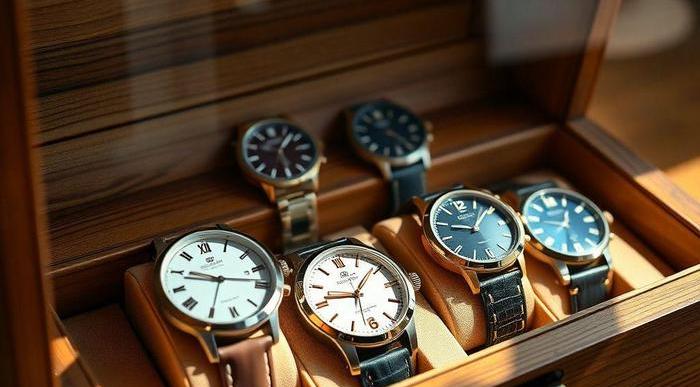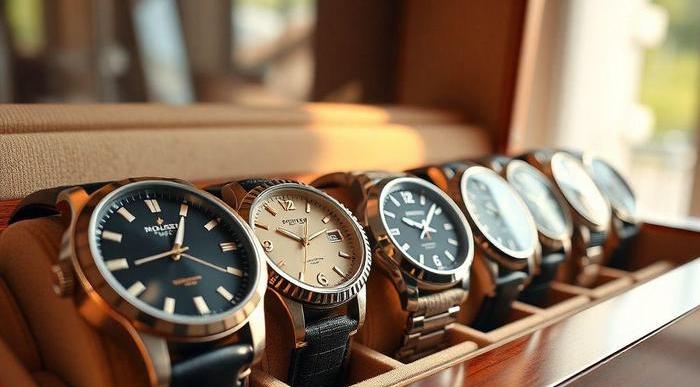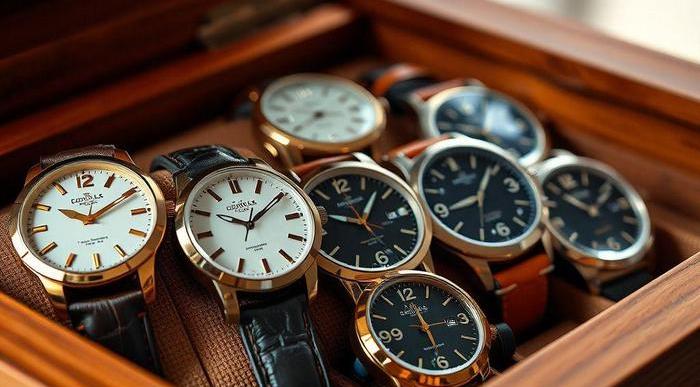Watches As Investments: The Most Sought-After Models And Trends
Note: This page contains affiliate links.
As an Amazon Associate, I earn from qualifying purchases when you click on the link, but you are not charged extra.
In recent years, the surge of interest in watch investments has led certain models to become highly sought after, fetching record-breaking prices at auctions and in the secondary market. Iconic models from brands such as Rolex, Patek Philippe, Audemars Piguet, and Omega often top the list for serious collectors and investors alike. Within these brands, specific models have attained legendary status and a near-universal demand. Examples include the Rolex Daytona, Audemars Piguet Royal Oak, and Patek Philippe Nautilus.
Beyond individual models, trends like limited-edition releases, collaborations with celebrities, and unique material choices significantly drive demand. In recent years, blue and green dials, for instance, have become popular trends, with brands releasing limited versions in these colors, enhancing their appeal and value. Furthermore, watches crafted from alternative materials, such as ceramic or carbon fiber, attract collectors seeking distinctive timepieces.
Understanding the patterns and styles that elevate certain models above others can be vital for investors. These trends are often cyclical but tend to follow the same fundamentals: scarcity, aesthetic appeal, and the watch’s association with significant events or personalities.
Understanding Watch Investment Basics
Before diving into watch investments, it is essential to understand some key principles that distinguish it from other types of investments. Unlike stocks or bonds, the value of watches is not determined by an immediate cash flow or yield. Instead, it’s tied to brand prestige, model rarity, historical significance, and condition.
Factors That Influence Watch Value
Watch value is influenced by a combination of intrinsic, historical, and market-driven factors. Some of the most impactful factors include:
- Brand Prestige: Well-known brands like Rolex, Patek Philippe, and Audemars Piguet consistently hold high value due to their reputation for quality, heritage, and exclusivity.
- Rarity and Production Numbers: Limited production runs, such as those seen in the Patek Philippe Grand Complications line, can significantly raise a watch’s value. Fewer pieces in circulation translate to higher demand.
- Condition and Provenance: The physical state of the watch, along with documentation verifying authenticity and history, are crucial to valuation. Watches in “mint” condition or with original components fetch higher prices.
- Materials and Craftsmanship: The materials used, such as precious metals or high-tech composites, along with complications like chronographs, moon phases, or perpetual calendars, can enhance a watch’s market value.
- Celebrity or Historical Association: Timepieces previously owned by famous individuals or used during notable events tend to appreciate substantially over time.
- Age and Vintage Appeal: Vintage watches, often those over 20-30 years old, possess unique aesthetic and historical appeal. Some vintage models, especially from iconic brands, are highly valued due to their scarcity and design evolution.
The Most Collectible Watch Brands

Several brands stand out in the world of watch investments, often defining the market through their heritage, craftsmanship, and exclusivity:
- Rolex: Known for its enduring appeal and robust design, Rolex remains one of the most liquid brands in watch investments. Iconic models like the Submariner, Daytona, and GMT-Master are consistently in high demand.
- Patek Philippe: This brand epitomizes luxury and exclusivity. Patek Philippe models, especially the Calatrava and Nautilus, are renowned for their exceptional craftsmanship, limited production, and frequent price appreciation.
- Audemars Piguet: The Royal Oak, particularly the Royal Oak Offshore, is a staple for investors. Known for its innovative design, Audemars Piguet has cultivated a significant following among collectors.
- Omega: While more accessible than Rolex or Patek Philippe, Omega’s Speedmaster (also known as the “Moonwatch”) and Seamaster models have a strong resale market, driven by their association with space exploration and James Bond.
- Vacheron Constantin: As one of the oldest watchmakers, Vacheron Constantin is highly regarded for its technical prowess. Models like the Overseas and Patrimony have steadily appreciated, appealing to those interested in intricate craftsmanship and heritage.
How To Spot Investment-Worthy Models
Identifying investment-worthy watches is an art and science that combines market awareness with a keen eye for detail. Here are some indicators:
- Limited Editions and Rare Variants: Limited production runs and unique dial colors or materials are often investment-worthy, as scarcity increases desirability.
- Desirable Complications: Complications like perpetual calendars, chronographs, and minute repeaters make certain watches more appealing and valuable.
- Heritage Models with a Strong Following: Classic models that have a consistent demand, such as the Rolex Submariner or Omega Speedmaster, are typically safe bets.
- Popularity of the Model Series: Watches in high-demand series with historical significance (like the Patek Philippe Nautilus) generally have a stronger appreciation potential.
Historical Data On Watch Appreciation

Over the past few decades, many luxury watches have shown significant appreciation. For instance, a Rolex Daytona purchased in the 1980s could have appreciated several hundred times its original value by now. Auction results and historical resale values provide insight into which brands and models have appreciated the most. As a rule, high-end vintage watches and those with historical or cultural importance often exhibit the strongest gains. Some limited-edition watches have outperformed major financial indices, though these examples are generally confined to top-tier brands and highly collectible models.
The Role Of Auctions In Watch Investments
Auctions play a pivotal role in the luxury watch market, setting benchmarks for high-value watches and bringing rare models to a global audience. Major auction houses like Christie’s, Sotheby’s, and Phillips have expanded their watch departments, often featuring exclusive, high-end timepieces. Auctions reveal current market trends and influence price trajectories for various models, as buyers compete for ownership of coveted pieces. Additionally, auctions provide transparency in valuation, with notable sales often publicized, reinforcing the desirability of certain models and brands.
Emerging Trends In Luxury Watch Investments

While established brands and vintage models continue to dominate, several new trends are shaping the luxury watch investment landscape. Microbrands, for instance, are gaining traction, driven by collectors seeking unique designs. Additionally, the rise of sustainable materials, green dials, and “neo-vintage” styles — contemporary models with vintage-inspired designs — is capturing attention. Technology’s role is also increasing, with digital authentication platforms providing greater transparency and security in watch trading.
Understanding The Secondary Market
The secondary watch market encompasses resales through private dealers, online marketplaces, and retail consignment stores. This market has grown exponentially, fueled by platforms such as Chrono24, WatchBox, and Bob’s Watches. Here, watches are bought and sold frequently, and trends can shift based on demand. Understanding secondary market dynamics is essential for investors, as it helps them gauge real-time market sentiment and set realistic expectations for resale value.
Risks And Rewards Of Investing In Watches
As with any investment, there are risks in the watch market. While some watches appreciate significantly, others may not increase in value or may depreciate. Counterfeit models, price volatility, and the influence of trends are all risks to consider. Watches can require upkeep and may lose value if damaged. However, successful watch investments offer rewards such as high appreciation potential, portfolio diversification, and a tangible asset with inherent value.
Conclusion
Luxury watch investments offer a unique blend of art, history, and financial potential. With patience, knowledge, and a discerning eye, investors can navigate this complex market, leveraging trends and timeless appeal to build a valuable collection. For those with a passion for horology, investing in watches can be both a profitable and rewarding endeavor, blending personal satisfaction with financial gain. As the watch market continues to evolve, it will be exciting to see how new trends, technologies, and tastes influence its future.
